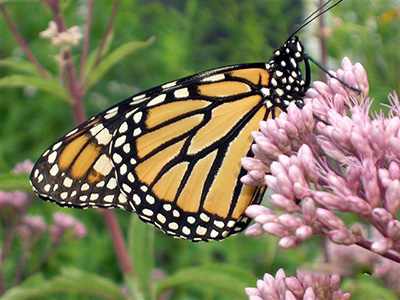Monarch Population Status
Thursday, July 20th, 2017 at 6:23 pm by Chip TaylorFiled under Monarch Population Status | Comments Off on Monarch Population Status

I’ve done many things in my career that I’ve enjoyed greatly and among those was teaching a course in honey bee biology. The course incorporated some hands-on lessons in how to manage bees for pleasure and the sweet rewards bees could provide. To manage bees for honey production, you have to know how to manipulate the growth of the colonies in the spring: that is, to bring the numbers of bees in each colony to the maximum number at the time the flowers provide the greatest amounts of nectar. Since colony development is strongly correlated with the seasonal progression of flowering (phenology), which in turn is influenced by temperature and moisture, the goal is to manage each colony in concert with the sequence of flowering to provide the best shot at maximizing honey production. I used to tell the students that each spring is a challenge, in effect a series of experiments, in which beekeepers have to apply their knowledge of bee biology and management skills for each colony with what they can deduce from the temperature and moisture patterns during the spring that determine plant growth and flowering. And so it is with monarchs. Each year is an experiment, or series of experiments, with numerous hypotheses, during which I try to match what I know about monarchs with the progression of the seasonal conditions that influence both monarch behavior and plant growth. As a beekeeper, my hypotheses were often off the mark and I have been off the mark about monarch projections as well, but that’s alright. The idea is to learn from one’s mistakes.
To make projections for each fall migration and overwintering population, I start with the numbers of monarchs measured at the overwintering sites in Mexico. Next, I focus on overwintering mortality, followed by the spring conditions that prevail as monarchs move northward from the overwintering sites to the milkweed areas in south and central Texas, and then the conditions in the South Region (Texas, Oklahoma, Louisiana, Arkansas, Kansas) during the growth of the first generation in March and April. That is followed by attention to the conditions during the period from 1 May-9 June that allow (or don’t allow) first-generation monarchs to reach the northern breeding grounds. Summer temperatures along with the seasonal distribution and amounts of rainfall are also in focus when estimating the fall and winter numbers.
The above provides the context for a number of hypotheses or projections concerning the coming migration and the opportunities to tag monarchs this fall. First, this should be a GREAT tagging season. It will certainly be as good as the 2015 season and probably better. The overwintering numbers should match or exceed the 4.01-hectare population measured in the winter of 2015-2016 (see Monarch Population Status from February). Further, several fall monitoring sites (Peninsula Point, MI; Long Point, ONT and Cape May, NJ) are all likely to record much higher numbers of monarchs than in recent years. Specifically, the migration through Cape May has the potential to be stronger than any migration since 2012. While the numbers at Cape May will probably not be as high as 2012, they are likely to rank within the top ten seasonal averages in the 25 years of that program. Fall monarchs should be abundant in the Upper Midwest from the eastern Dakotas east to Wisconsin and Illinois with good numbers present from Michigan through Ohio as well. Production of monarchs should also be higher than it has been for many years for all of the Northeast from New York and Pennsylvania through Maine. The Mid-Atlantic region hasn’t been heard from in recent months, but the flow south and southwest through that region by monarchs originating further north should present some good opportunities for tagging in that region as well. Taggers located south of the northern breeding areas, particularly those located in Kansas, Oklahoma and Texas, should also have a greater opportunity to tag monarchs than in recent years.
In sum, this looks to be a good year for monarchs – with a stronger migration in most regions and a good prospect that the overwintering population will increase from the 2.91 hectares of last year to 4 hectares or better this coming winter.


Sorry, comments for this entry are closed at this time.